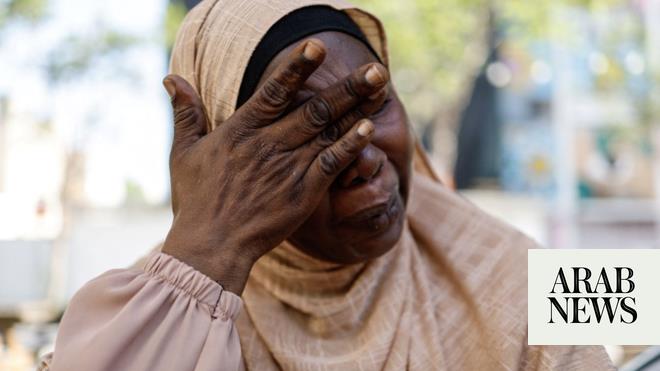
Lombardy’s death rate from coronavirus is about 17 percent
The central government has little to say on the issue
ROME: Treating coronavirus patients in hospitals can dramatically increase the death rate from the illness, a study compiled by the regional health authority in Veneto, one of the Italian regions hardest hit by the outbreak, suggests.
The northern Italian region, along with neighboring Lombardy, has been at the center of Italy’s coronavirus emergency since the outbreak began in late February.
But the two regions, both in the wealthiest part of the country and with top-class hospital facilities, have sharply differing fatality rates, a fact that has puzzled health professionals.
Lombardy’s death rate from coronavirus is about 17 percent, while Veneto’s is about 5 percent.
In Lombardy, hospital staff have paid the highest price for the pandemic, with most of the 94 Italian doctors killed so far by the virus from the region.
Research suggests that one reason for the disparity in the death rate is that testing in Veneto has been much more extensive than in Lombardy and the rest of the country.
“The more tests that are carried out, the more positive cases are found, and that brings down the overall death rate among those infected,” experts say.
But another key factor, they believe, is that Lombardy admitted more people to hospital, while Veneto urged them to stay at home or to seek treatment in small local health clinics.
While Lombardy relies on big hospitals, Veneto has a more decentralized health system with more local clinics.
“In Lombardy, they hospitalized nearly 60 percent of confirmed cases, quickly running out of beds, especially in the intensive care units,” Giorgio Palu, a prominent virologist and adviser to the Veneto regional government on the pandemic, said.
“However, in Veneto, GPs and local health authorities acted like a filter. In the end, only 20 percent of people claiming sickness with coronavirus symptoms were hospitalized. We believe that this could have made the difference. By keeping at home people who were positive but asymptomatic, we avoided the overcrowding of hospitals and the spread of the virus.”
Palu believes that the decision to transfer patients from a hospital in the Lombardy town of Codogno, the original focus of the outbreak, to other hospitals in the region was a “very unfortunate” move.
“It exported the contagion. They acted out of emotion by bringing everyone into the hospitals. Instead they should have kept them outside for as long as possible,” he told the Corriere della Sera daily newspaper.
The differing strategies in Veneto and Lombardy stems from the fact that regional health authorities in Italy have a high degree of autonomy.
The central government has little to say on the issue, which has caused tensions between Rome and local governors demanding more resources.
Concerns that hospitals were becoming breeding grounds for the spread of coronavirus were raised by some Italian doctors in a paper published in the New England Journal of Medicine.
“Western health care systems have been built around the concept of patient-centered care, but the coronavirus pandemic requires home-based care,” Dr. Maurizio Cereda, one of the authors of the paper, said.
“Keeping patients at home rather than sending them to hospital will help contain the pandemic. Big hospitals in northern Italy are themselves becoming sources of infection.”
Cereda is convinced that sick patients have been passing on the infection to nurses, doctors, hospital staff and ambulance drivers, who then carried the virus back into the community when they returned home after work.
“Patients started arriving and the rate of infection in other patients soared. That is one thing that probably led to the current disaster,” he said, highlighting the high fatality rate among Italian medical staff.
Since the end of February 94 doctors have died from the illness and thousands of hospital staff have been infected by the virus — huge numbers compared with the rest of the world.
One of the latest Italian deaths, Dr. Marcello Natali, 57, repeatedly sounded the alarm about Italy’s failing response to the crisis in interviews as regional chief of the Federation of General Practitioners.
“We weren’t prepared for coronavirus,” Natali said in an interview only a few days before his death, warning about the lack of medical supplies available for fighting the contagion.
Natali claimed that while treating patients he couldn’t wear protective gloves because there weren’t enough to go around.
“They have run out of gloves,” he said.
According to Paolo Padroni, the federation’s secretary, almost 200 of the 600 doctors in the Lombardy province of Bergamo are sick, and health care workers make up about 6 percent of Italy’s 100,000 coronavirus cases.
“If we continue in this way, we risk not only that there will be insufficient doctors to assist everyone, but also that the same health professionals will become a vehicle for infection,” Giulio Gallera, chief of the Lombardy Health and Welfare Administration, told a media conference in Milan.











